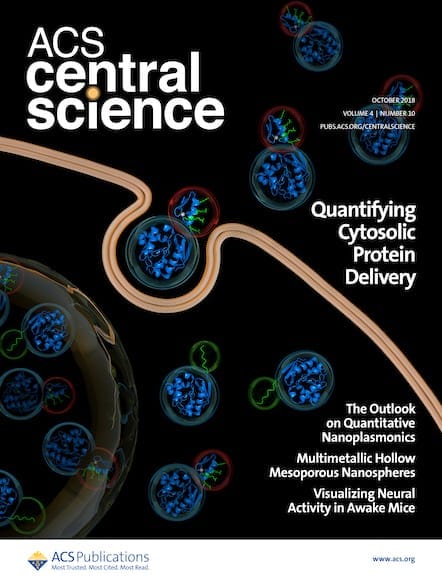Professor Doron Shabat of Tel-Aviv University knew he had a hit on his hands: his chemiluminescent compound could be used in biological probes for diagnosing diseases. This wasn’t a new idea, but his version was water-resistant and 3,000 times brighter than standard commercially available probes. He just needed to get the word out. That’s why […]

The journal only publishes innovative research of the highest quality. Each article is heavily promoted through the journal’s own marketing and social media channels and it has already achieved a high partial Impact Factor. Moreover, ACS Central Science is fully open access, so readers wouldn’t need a subscription to learn about his work. Anyone with an internet connection could read “Opening a Gateway for Chemiluminescence Cell Imaging: Distinctive Methodology for Design of Bright Chemiluminescent Dioxetane Probes” for free and understand its potential. A few days after publication, that extra reach paid off. Dr. Urs Spitz, the CEO of a Swiss company called Biosynth, contacted Shabat about licensing his research.
Shabat says he wasn’t surprised that someone recognized the commercial value of his work. “It’s a very simple technology, but the application is clear,” he says. Yet the speed of the process was remarkable. The licensing agreement was the fastest in the history of the University of Tel Aviv. Now Shabat and Biosynth are partnering together through the university on additional research.
The idea of using luminescent materials to identify diseases isn’t new. Shabat first considered the idea about 20 years ago, during his postdoctoral period at The Scripps Research Institute. At the time, he couldn’t get the project to work, but when he came back to the idea last year with more experience under his belt, he was able to overcome the challenge of keeping water from extinguishing the light emission. “It was a trivial change,” to earlier designs he says. “Anyone could have made these chemical derivatives. But that happens in life sometimes. A little change makes the difference.”
The change to publishing in ACS Central Science for the first time made a difference too. Shabat notes that he initially shared the research with another journal of high impact, but the paper never went to review. He says the difference is that ACS journals are edited by active researchers who could discuss the significance of his work. “ACS Editors are professional chemists, so when you make an argument with them, you’re speaking the same language,” he says.
“It’s a very fast system and very professional,” he adds. “And after the paper was accepted, the system worked very quickly to promote the paper. It’s simply the best experience I’ve had so far with publication.”
